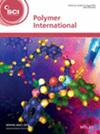Sajin Justin Abraham Baby, Sujin Jose Arul, Raja Thandavamoorthy, Yuvarajan Devarajan
求助PDF
{"title":"Elevating mechanical and thermal performance on alkali-treated pineapple/glass fibre sandwich composite","authors":"Sajin Justin Abraham Baby, Sujin Jose Arul, Raja Thandavamoorthy, Yuvarajan Devarajan","doi":"10.1002/pi.6705","DOIUrl":null,"url":null,"abstract":"<p>The present work generated hybrid composite sandwiches by incorporating 65% epoxy resin and 35% reinforcements derived from pineapple and glass fibres. The specimens were subjected to mechanical characterization by tensile, flexural and impact examinations. Among the untreated samples, the specimens containing untreated pineapple fibres (PF) with a composition of 17% PF, 18% glass fibres (three layers) and 65% epoxy by weight (17PF/TLGF) showed the most superior mechanical characteristics. Nevertheless, specimens containing fibres treated with NaOH exhibited exceptional characteristics, attaining a tensile strength of 88.121 MPa, a flexural strength of 94.213 MPa and an impact energy of 4.1 J. These data indicate a 20% enhancement in both tensile and flexural strength as well as a 63% improvement in impact strength compared to specimens containing 35% PF and lacking glass fibres (35PF/0GF). In comparison to 17PF/TLGF, the specimens treated with NaOH exhibited a 4.34% gain in tensile strength, a 4.24% increase in flexural strength and a 9% increase in impact strength. Experimental TGA was performed on the chemically treated fibre composite specimens, specifically identified as 35PF/0GF and 17PF/TLGF. Approximately 260 °C marked the beginning of decomposition for the 35PF/0GF sample, but the 17PF/TLGF sample decomposed at roughly 310°C. In addition, the fragmented surface of the 17PF/TLGF sample was analysed using SEM. © 2024 Society of Chemical Industry.</p>","PeriodicalId":20404,"journal":{"name":"Polymer International","volume":"74 2","pages":"170-177"},"PeriodicalIF":3.6000,"publicationDate":"2024-10-08","publicationTypes":"Journal Article","fieldsOfStudy":null,"isOpenAccess":false,"openAccessPdf":"","citationCount":"0","resultStr":null,"platform":"Semanticscholar","paperid":null,"PeriodicalName":"Polymer International","FirstCategoryId":"92","ListUrlMain":"https://scijournals.onlinelibrary.wiley.com/doi/10.1002/pi.6705","RegionNum":4,"RegionCategory":"化学","ArticlePicture":[],"TitleCN":null,"AbstractTextCN":null,"PMCID":null,"EPubDate":"","PubModel":"","JCR":"Q2","JCRName":"POLYMER SCIENCE","Score":null,"Total":0}
引用次数: 0
引用
批量引用
Abstract
The present work generated hybrid composite sandwiches by incorporating 65% epoxy resin and 35% reinforcements derived from pineapple and glass fibres. The specimens were subjected to mechanical characterization by tensile, flexural and impact examinations. Among the untreated samples, the specimens containing untreated pineapple fibres (PF) with a composition of 17% PF, 18% glass fibres (three layers) and 65% epoxy by weight (17PF/TLGF) showed the most superior mechanical characteristics. Nevertheless, specimens containing fibres treated with NaOH exhibited exceptional characteristics, attaining a tensile strength of 88.121 MPa, a flexural strength of 94.213 MPa and an impact energy of 4.1 J. These data indicate a 20% enhancement in both tensile and flexural strength as well as a 63% improvement in impact strength compared to specimens containing 35% PF and lacking glass fibres (35PF/0GF). In comparison to 17PF/TLGF, the specimens treated with NaOH exhibited a 4.34% gain in tensile strength, a 4.24% increase in flexural strength and a 9% increase in impact strength. Experimental TGA was performed on the chemically treated fibre composite specimens, specifically identified as 35PF/0GF and 17PF/TLGF. Approximately 260 °C marked the beginning of decomposition for the 35PF/0GF sample, but the 17PF/TLGF sample decomposed at roughly 310°C. In addition, the fragmented surface of the 17PF/TLGF sample was analysed using SEM. © 2024 Society of Chemical Industry.
提高碱处理菠萝/玻璃纤维夹层复合材料的机械和热性能
目前的工作是通过加入65%的环氧树脂和35%的菠萝纤维和玻璃纤维增强剂来产生混合复合三明治。通过拉伸、弯曲和冲击试验对试样进行了力学表征。在未处理的样品中,菠萝纤维(PF)含量为17%,玻璃纤维(3层)含量为18%,环氧树脂(17PF/TLGF)含量为65%的菠萝纤维(PF)表现出最优异的力学性能。然而,含有NaOH处理纤维的试样表现出特殊的特性,拉伸强度为88.121 MPa,弯曲强度为94.213 MPa,冲击能为4.1 J。这些数据表明,与含有35% PF和缺乏玻璃纤维(35PF/0GF)的样品相比,拉伸和弯曲强度提高了20%,冲击强度提高了63%。与17PF/TLGF相比,NaOH处理的试样的抗拉强度提高了4.34%,弯曲强度提高了4.24%,冲击强度提高了9%。对化学处理后的纤维复合材料试样进行了实验TGA,具体鉴定为35PF/0GF和17PF/TLGF。大约260°C标志着35PF/0GF样品的分解开始,但17PF/TLGF样品在大约310°C分解。此外,利用扫描电镜对17PF/TLGF样品的破碎表面进行了分析。©2024化学工业学会。
本文章由计算机程序翻译,如有差异,请以英文原文为准。



 求助内容:
求助内容: 应助结果提醒方式:
应助结果提醒方式:


